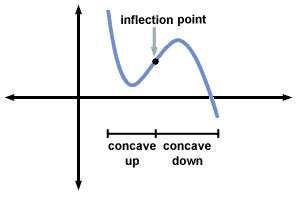Please wait while we process your payment
If you don't see it, please check your spam folder. Sometimes it can end up there.
If you don't see it, please check your spam folder. Sometimes it can end up there.
Please wait while we process your payment

By signing up you agree to our terms and privacy policy.
Don’t have an account? Subscribe now
Create Your Account
Sign up for your FREE 7-day trial
By signing up you agree to our terms and privacy policy.
Already have an account? Log in
Your Email
Choose Your Plan
Individual
Group Discount
Save over 50% with a SparkNotes PLUS Annual Plan!
 payment page
payment page
Purchasing SparkNotes PLUS for a group?
Get Annual Plans at a discount when you buy 2 or more!
Price
$24.99 $18.74 /subscription + tax
Subtotal $37.48 + tax
Save 25% on 2-49 accounts
Save 30% on 50-99 accounts
Want 100 or more? Contact us for a customized plan.
 payment page
payment page
Your Plan
Payment Details
Payment Summary
SparkNotes Plus
You'll be billed after your free trial ends.
7-Day Free Trial
Not Applicable
Renews July 25, 2025 July 18, 2025
Discounts (applied to next billing)
DUE NOW
US $0.00
SNPLUSROCKS20 | 20% Discount
This is not a valid promo code.
Discount Code (one code per order)
SparkNotes PLUS Annual Plan - Group Discount
Qty: 00
SparkNotes Plus subscription is $4.99/month or $24.99/year as selected above. The free trial period is the first 7 days of your subscription. TO CANCEL YOUR SUBSCRIPTION AND AVOID BEING CHARGED, YOU MUST CANCEL BEFORE THE END OF THE FREE TRIAL PERIOD. You may cancel your subscription on your Subscription and Billing page or contact Customer Support at custserv@bn.com. Your subscription will continue automatically once the free trial period is over. Free trial is available to new customers only.
Choose Your Plan
This site is protected by reCAPTCHA and the Google Privacy Policy and Terms of Service apply.
For the next 7 days, you'll have access to awesome PLUS stuff like AP English test prep, No Fear Shakespeare translations and audio, a note-taking tool, personalized dashboard, & much more!
You’ve successfully purchased a group discount. Your group members can use the joining link below to redeem their group membership. You'll also receive an email with the link.
Members will be prompted to log in or create an account to redeem their group membership.
Thanks for creating a SparkNotes account! Continue to start your free trial.
We're sorry, we could not create your account. SparkNotes PLUS is not available in your country. See what countries we’re in.
There was an error creating your account. Please check your payment details and try again.
Please wait while we process your payment

Your PLUS subscription has expired
Please wait while we process your payment
Please wait while we process your payment

Analysis of Graphs

Once we have found the critical points, one way to determine if they are local minima or maxima is to apply the first derivative test. Another way uses the second derivative of f. Suppose x0 is a critical point of the function f (x), that is, f'(x0) = 0. We have the following three cases:
The first and second derivative tests employ essentially the same logic, examining what happens to the derivative f'(x) near a critical point x0. The first derivative test says that maxima and minima correspond to f' crossing zero from one direction or the other, which is indicated by the sign of f' near x0. The second derivative test is just the observation that the same information is encoded in the slope of the tangent line to f'(x) at x0.
A function f (x) is called concave up at x0 if f''(x0) > 0, and concave down if f''(x0) < 0. Graphically, this represents which way the graph of f is "turning" near x0. A function that is concave up at x0 lies above its tangent line in a small interval around x0 (touching but not crossing at x0). Similarly, a function that is concave down at x0 lies below its tangent line near x0.
The remaining case is a point x0 where f''(x0) = 0, which is called an inflection point. At such a point the function f holds closer to its tangent line than elsewhere, since the second derivative represents the rate at which the function turns away from the tangent line. Put another way, a function usually has the same value and derivative as its tangent line at the point of tangency; at an inflection point, the second derivatives of the function and its tangent line also agree. Of course, the second derivative of the tangent line function is always zero, so this statement is just that f''(x0) = 0.
Inflection points are the critical points of the first derivative f'(x). At an inflection point, a function may change from being concave up to concave down (or the other way around), or momentarily "straighten out" while having the same concavity to either side. These three cases correspond, respectively, to the inflection point x0 being a local maximum or local minimum of f'(x), or neither.

Please wait while we process your payment

